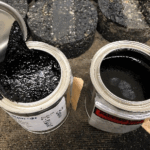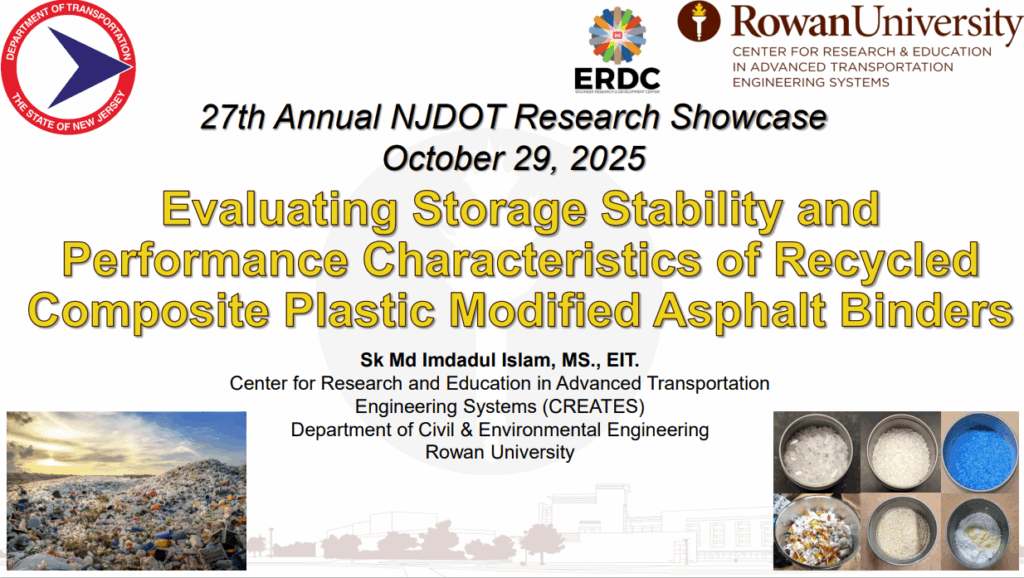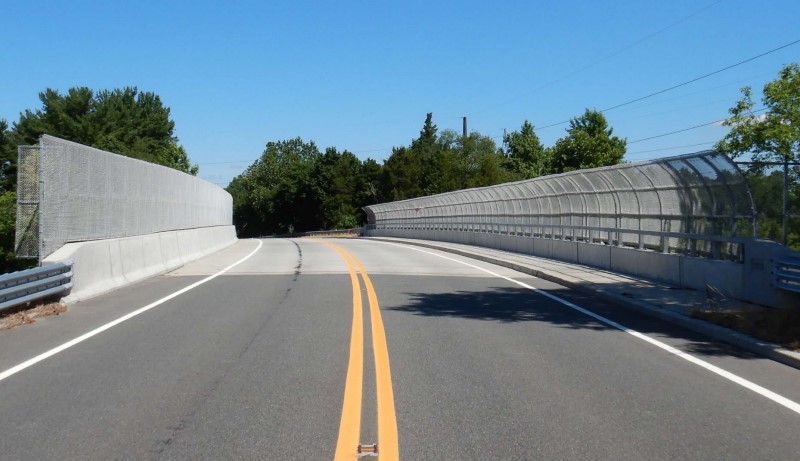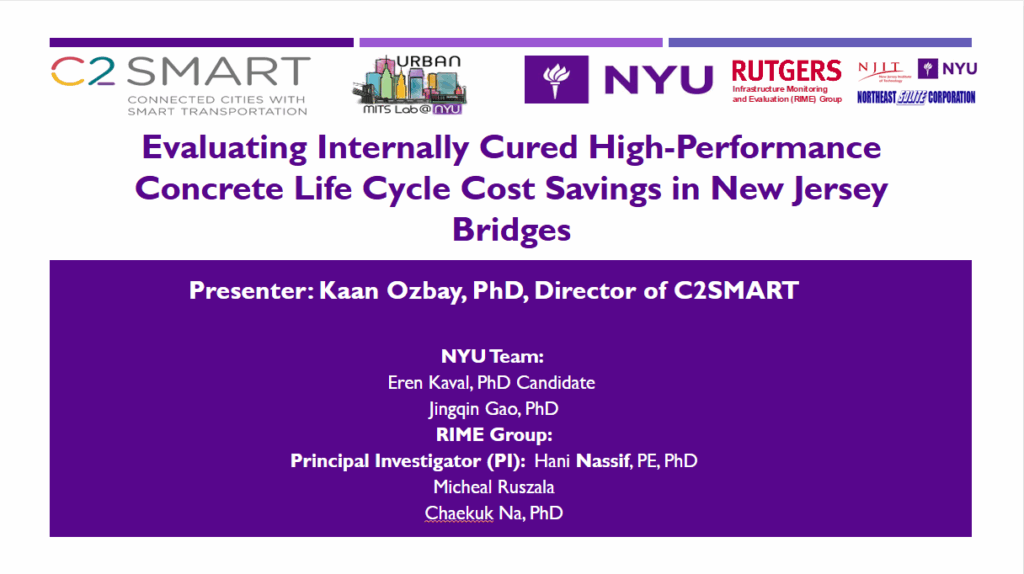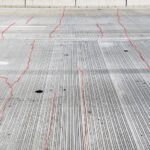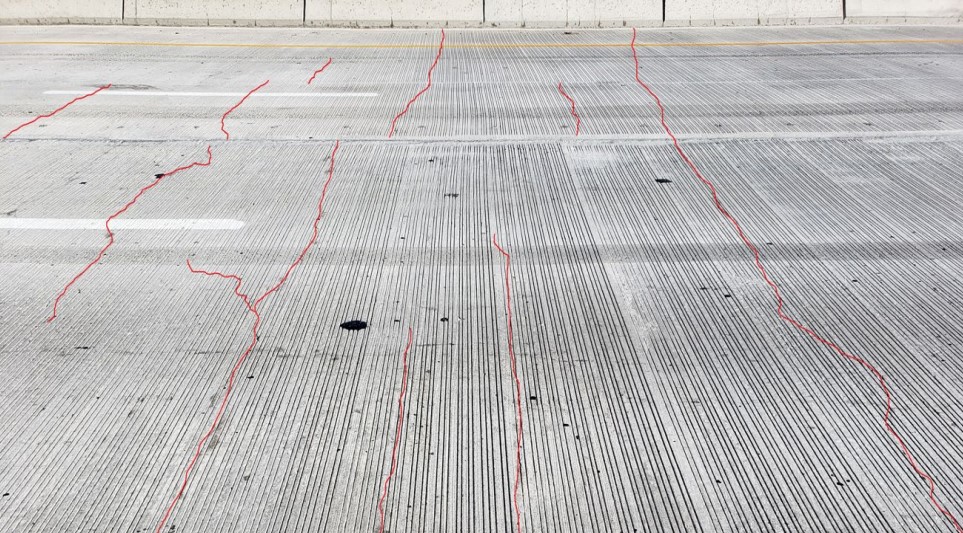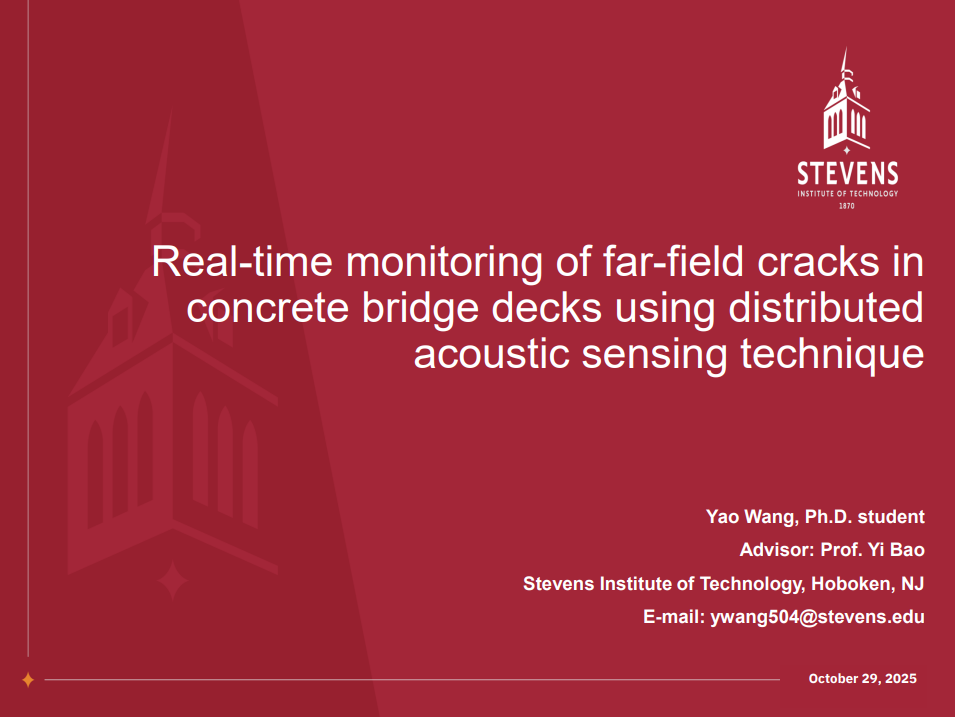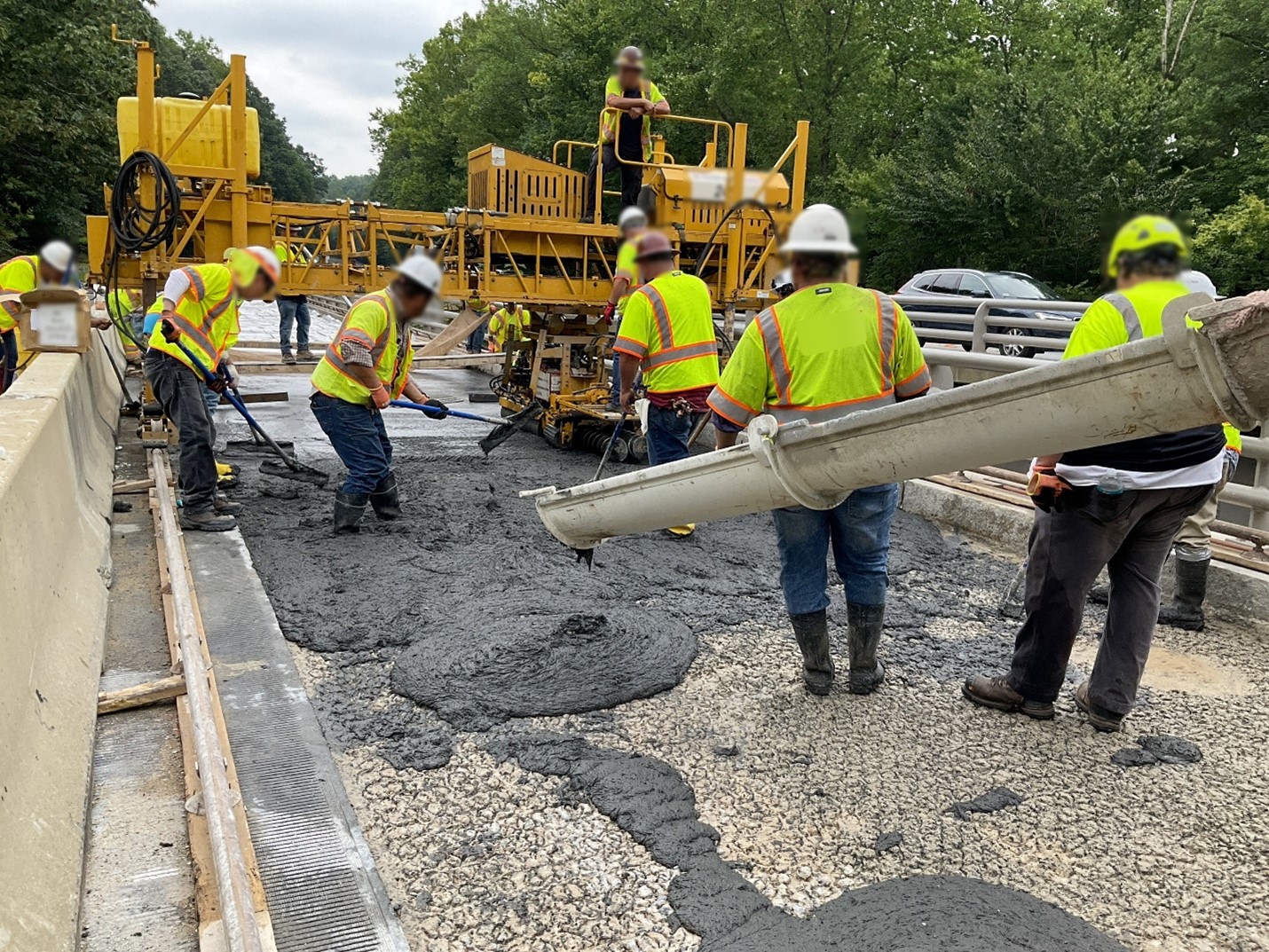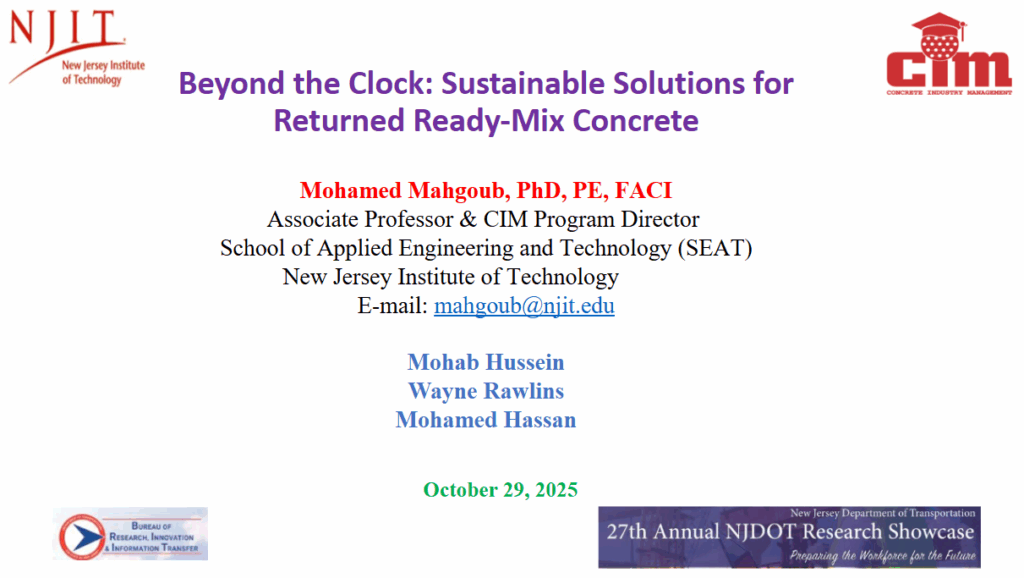Presenter: Sk Md Imdadul Islam
Organization: Rowan University
INFRASTRUCTURE
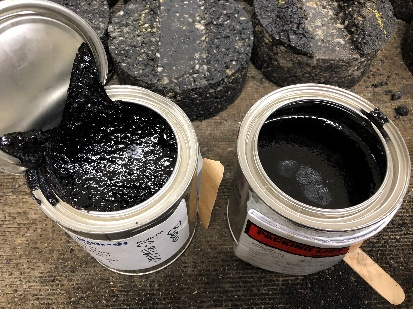
Abstract:
The utilization of plastic has escalated over the past five decades, rising from 15 Mt to 311 Mt where a significant portion is regarded as waste after their end of use life. These waste plastics can be single or composite type, depending on how many polymers/plastics they include. Merely 12% of all plastics are recycled, while rest are disposed of in landfills, subjected to incineration, and some escape the collecting system, ultimately contaminating oceans and environment. To overcome this issue, utilizing waste plastics in flexible pavements looks promising. However, in wet mixing inadequate storage stability, attributed to compatibility issues between the plastic and asphalt is very frequent. This study evaluated the storage stability and performance characteristics of composite plastic modified binders at dosages of 1% to 3%, using polyethylene grafted maleic anhydride (PE-g-MA) and Reactive Elastomeric Terpolymer (RET) stabilizers. Thermal characterization of plastics was carried out using differential scanning calorimetry, showing melting points between 130–155°C, suitable for wet blending applications. Storage stability was evaluated using complex shear modulus separation index and fluorescence microscopy.
The results revealed improvement in storage stability with both stabilizers up to 2% dosage, with RET achieving more uniform and homogeneous plastic dispersion in asphalt binder matrix. Furthermore, rheological properties were evaluated through Superpave performance grading (PG), Multiple Stress Creep Recovery (MSCR), and Linear Amplitude Sweep (LAS). RET increased the high PG of plastic modified binders by up to three grades for HP (HDPE+PP) and two grades for LHP (LDPE+HDPE+PP), while PE-g-MA had a minimal impact on high PG. Both stabilizers maintained the low PG of the base binder, with RET providing greater improvement than PE-g-MA. The rutting performance increased significantly with RET, by enhancing recovery and lowering Jnr, outperforming PE-g-MA. With the addition of plastic, the fatigue performance was degraded. However, the use of stabilizers mitigated this effect, with RET and PE-g-MA enhanced fatigue lives by approximately 1500% and 270%, respectively. Overall, RET stabilizer was more effective than PE-g-MA in improving storage stability and performance characteristics. These findings suggest that composite plastic modified binders with up to 2% dosage combined with stabilizers can offer better storage stability and performance for sustainable pavement applications.
Sk Md Imdadul Islam is a PhD student in Civil and Environmental Engineering and a graduate research fellow at Center for Research and Education in Advanced Transportation Engineering Systems (CREATES) at Rowan University, conducting research under the guidance of Dr. Yusuf Mehta. His current work, funded by the U.S. Army Engineer Research and Development Center (ERDC) and Cold Regions Research Engineering Laboratory (CRREL), focuses on the “Incorporation of Recycled Plastics into Asphalt Binder and Mixtures,” aligning with his research interests in Pavement Engineering, Sustainability, and Materials & Solid Waste Management. Prior to his doctoral studies, he earned an M.S. in Civil Engineering from The University of Texas at RGV and B.S. in Civil Engineering from the Khulna University of Engineering & Technology. His professional background also includes practical experience as a Project Estimator 1 at Millennium Engineers Group Inc., further fueling his motivation to contribute meaningfully to the field of engineering materials and advanced transportation systems.

